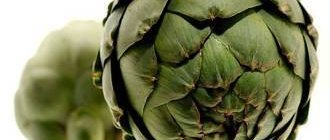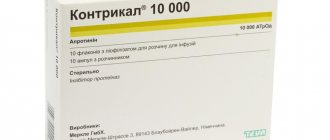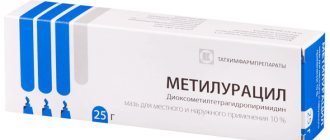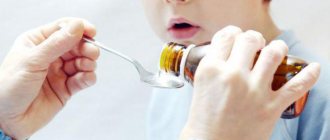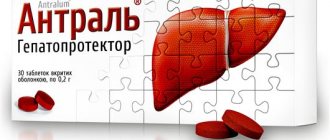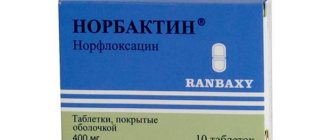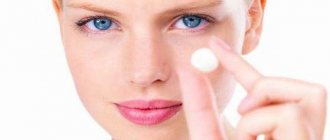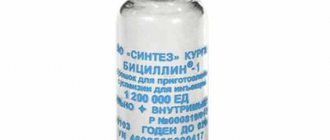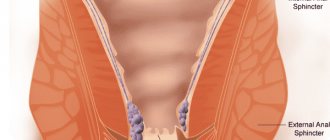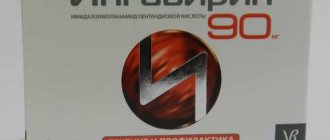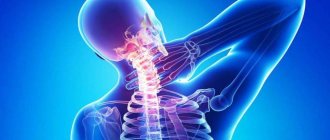Write a review
Reviews: 0
Manufacturers: DIZHAFARM, JSC
Active ingredients
- Fusarium mushroom biomass
Disease class
- Immunodeficiency, unspecified
- Autoimmune thyroiditis
- Thyroid disease, unspecified
- Insulin-dependent diabetes mellitus
- Non-insulin dependent diabetes mellitus
- Herpes simplex virus keratitis and keratoconjunctivitis (B00.5)
- Ovarian dysfunction
- Acute upper respiratory tract infection of multiple and unspecified localization
- Flu, virus not identified
- Cervix
- Other specified bowel diseases
- Alcoholic liver disease
- Toxic liver damage
- Malaise and fatigue
- Other medicinal products, predominantly systemic, not elsewhere classified
- Radiological procedure and radiation therapy
- Other chlamydial sexually transmitted diseases
- Anogenital herpetic viral infection
- Other specified diseases predominantly sexually transmitted
- Chemotherapy for neoplasm
- State of recovery
- Restrictions in activity caused by reduction or loss of ability to work
- Other and unspecified infectious diseases
- Other diseases caused by chlamydia
- Urban frenzy
- Malaria, unspecified
- Viral encephalitis, unspecified
- Yellow fever
- Viral hepatitis, unspecified
- Shingles
- Trauma of unspecified location
- Consequences of injuries unspecified by location
- Other types of malnutrition
- Surgical practice
- Urinary tract infection without established localization
- Breast disease, unspecified
- Endometriosis
- Other and unspecified ovarian cysts
- Menopause and menopause in women
- Female infertility
Clinical and pharmacological group
- Not indicated. See instructions
Pharmacological action
- Adaptogenic
- Detoxification
- Antiviral
- Antiparasitic
- Antimalarial
- General strengthening
- Regenerating and reparative
- Metabolic
- Immunomodulatory
Pharmacological group
- Antiviral (except HIV) drugs
- Medicines for the treatment of HIV infection
- Antiparasitic agents
- Hepatoprotectors
- Antihypoxants and antioxidants
- Other immunomodulators
- Detoxifying agents, including antidotes
Pharmacological properties
Milife is produced in the form of tablets and capsules. The active substance is the biological mass of the mycelium of the fungus Fusarium sambucinum.
The composition contains additional substances that promote the absorption of the medicine:
- potato starch;
- milk sugar;
- rafinated sugar;
- calcium stearate.
The drug has a wide spectrum of action. The active substance helps overcome stress, strengthens and stimulates the immune system. Due to this, a person becomes resistant to the influence of negative environmental factors (temperature changes, air and water pollution, exposure to viruses and metabolites of pathogenic microorganisms).
Tablets can increase a person’s physical and intellectual activity and restore the body after stress and illness. The drug has hepatoprotective properties and is able to act at the cellular level.
The presence of many active compounds determines the multivalency of the drug’s effect on metabolic endocrine-immune processes, maintains homeostasis (constancy of the internal state of organs and systems), and corrects the functioning of metabolic processes.
Milife is a biomass of a monoculture of the spore fungus Fusarium sambucinum (strain VSB-917) with a high content of low molecular weight oligopeptide compounds, alkaline oligopeptides, and amino acids.
The lipid fraction of Milife contains phospholipids, glycerides, sterols, as well as essential fatty acids, which the body cannot synthesize and therefore must receive with food. The carbohydrate composition of the tablets contains active polysaccharides. Includes a balanced set of macro- and microelements in an easily digestible form, a full complex of B vitamins.
The medication has a beneficial effect at the molecular and cellular levels, since it finds a “weak spot” in the body and acts on it selectively and consistently.
Milife tablets affect immunocompetent organs, normalize not only cellular, but also humoral immunity. Thanks to the ability to rid cells of extrachromosomal DNA, the tablets suppress defective molecules and increase the accuracy of DNA sequence replication. In this regard, the medicine is effective in the treatment and prevention of cancer.
It is possible to induce immunity by increasing T lymphocytes. Therefore, even after the virus enters the body, it is destroyed. However, the viral particles may not yet begin to divide. The drug prevents the virus from acquiring resistance to certain substances and the ability to evolve.
According to recent studies, the drug has pronounced immunological properties, so it is effective against viral diseases. Milife has also proven itself in sports medicine, since it contains no doping components.
Clinical studies have shown that the tablets help improve the health of patients with diabetes. Type I diabetes when using Milife is characterized by a person's lower need for insulin, and with type II diabetes there is a significant improvement in carbohydrate metabolism, which makes it possible to reduce the dose of hypoglycemic drugs.
The positive effect of using tablets or capsules is due to the effect on the structure of the brain, as a result of which the functioning of the nervous and endocrine systems is normalized. Therefore, Milife is able to eliminate conditions for the development of hormone-dependent tumors, as well as restore the condition of a woman’s body during menopause.
When taking the tablets, the level of gluco- and mineralocorticoids in the adrenal cortex is normalized, which helps restore the normal menstrual cycle.
The drug has a positive effect on the immune system of patients with cancer. Such results are also observed in lymphogranulomatosis, non-Hodgkin's lymphoma, and acute leukemia. Therefore, oncologists strongly recommend taking Milife during a course of radiation and chemotherapy.
It is also necessary to take pills during the rehabilitation period to promote rapid recovery of the body. The active substance is able to stabilize the cell membrane and also slow down the process of lipid oxidation. As a result, the level of hemoglobin, the number of platelets and leukocytes in the blood increases.
Among the treatment of cancer patients during radiation therapy and during the rehabilitation period, a positive result is observed. Milife is capable of exhibiting antiviral and antimicrobial effects. This is explained by a significant slowdown in the process of DNA replication of microorganisms at the level of DNA gyrase, as well as an effect on the RNA molecule and protein synthesis. During the experiments, it was found that the medicine does not have immunotoxic or mutagenic properties.
special instructions
Over the course of 15 years, observations were carried out on people of different ages and genders who took the biomass of the mycelium of the monoculture of the fungus Fusarium sambucinum, the results obtained indicate that during therapy with Milife:
- The levels of all blood parameters (biochemical and clinical) are normalized;
- The level of hormones of the pituitary gland and ovaries in the I and II phases of the menstrual cycle is correlated, the amount of progesterone increases in the ovulation phase; none of the observed women of reproductive age had an anovulatory cycle (according to the hormonal profile);
- The indicators of the B- and T-cell components of the immune system are normalized;
- The neurohormonal profile within the reproductive ring of the hypothalamus-pituitary-adrenal glands-ovaries is stabilized and normalized, this makes it possible to recommend the use of the drug for girls in the pre- and puberty period to relieve the syndrome of psycho-emotional lability, as well as to establish and normalize the menstrual cycle;
- Subserous-interstitially located fibromatous nodes decrease in size, up to their complete lysis; in a small percentage of the subjects, expulsion of fibromatous nodes located submucosally occurred; multicystic ovarian degeneration and the cellular structure of the myometrium disappear (confirmed by ultrasound results);
- Positive dynamics of the electroencephalogram (EEG) are observed: the α-rhythm is normalized, zonal differences appear, paroxysmal changes in the case of functional loads are leveled, which indicates the normalization of the working state of the mesodiencephalic structures of the brain as a result of taking Milife (noted in more than 90% of cases);
- The blood supply to the carotid artery basins improves, vascular tone is normalized, there are no signs of venous stasis in the vertebrobasilar vascular basin of the brain; microcirculation improves not only due to the regeneration of the rheological characteristics of the blood, but also due to improved circulation directly in the walls of blood vessels, including the epithelium (confirmed by the results of functional studies);
- The impaired neurohumoral regulation and energy resources of the myocardium are restored, as a result of which the contractile ability of the myocardium, the functions of positive inotropic stimulation and relaxation of the heart muscle are improved; the compensatory capabilities of systems and organs are improved as a result of the restoration of bioenergetic processes, which contributes to more economical functioning of the heart;
- The microscopic structure of smooth muscle fibers and mucous membranes is restored in cases of chronic latent forms of chlamydia and genital herpes due to the massive release of infectious agents from infected cells with their subsequent elimination (this process is associated with the development of short immunity in the body under the influence of Milife);
- The overall athletic performance of athletes increases (by no less than 30%) with a course of taking the drug for 3 weeks (effectiveness is determined by increasing the time of running to failure on a treadmill with increasing physical activity in steps);
- The antioxidant properties of the body are enhanced, which is manifested morphologically by stabilization of muscle mass against the background of consumption of adipose tissue; in the control group, under similar loads, signs of maladaptation were recorded, expressed by a total decrease in three morphological components - muscle mass, body weight and fat mass;
- An increase in urea concentration in the blood of athletes is prevented (statistically confirmed data - by 17.8%), and a decrease in the level of lactate and hematocrit; there is an increase in the contractile ability of the myocardium and an improvement in the propulsive function of the heart muscle (in the case of course use of Milife);
- A certain economization of the work of the circulatory system is achieved by improving the ability of muscles to absorb oxygen and enhancing the ability for isotonic contraction of the heart muscle;
- Positive dynamics are noted in terms of myocardial contractility and systole phases of the cardiac cycle; the pre-expulsion period is extended, improving the ability of the myocardium to pump up the tension necessary for powerful contraction; intraventricular pressure decreases, creating conditions for reducing tension in the wall of the left ventricle, which, together with reduced systolic characteristics of the size of the left ventricle and the thickness of its posterior wall, contributes to a certain decrease in systolic meridional and circulatory stress and an increase in the index of functioning of the structures; when assessing diastolic function, an improvement in the ability of myocardiocytes to accumulate the required energy reserve was revealed;
- The immunological reactivity of high-class athletes is regenerated, as a result of which the reduced concentration of immunoglobulins A, G and M is normalized;
- The level of complement components C3 and C4, reduced as a result of exhaustive physical exercise in athletes during training to develop endurance, is normalized;
- Factors of nonspecific resistance, such as the level of α-1-glycoprotein and α-2-glycoprotein, are normalized, while the concentration of haptoglobin and seromucoid remains virtually unchanged; there is a beneficial effect on the components of cellular immunity (intensity of phagocytosis, activity of phagocytes, lysosomes, monocytes, increase in the number of B- and T-lymphocytes).
Indications for use
The drug has a large number of useful properties. That is why it can be used not only for treatment, but also for the prevention of certain diseases.
Indications for taking the drug Milife:
- chronic fatigue;
- immune dysfunction;
- preparation for surgery;
- post-operative rehabilitation;
- liver damage from a virus or toxic substances;
- alcoholism;
- immune deficiency and immune depression;
- influenza, latent form of herpes, chlamydia, ureaplasmosis;
- HIV and hepatitis C, malaria and yellow fever;
- rehabilitation of athletes after injuries;
- autoimmune diseases;
- radiation and chemotherapy in cancer patients;
- neuroendocrine disorders;
- menopausal syndrome;
- training and competition of athletes in order to increase performance and increase the threshold of fatigue.
Analogs
Milife analogues that have a similar mechanism of action include:
- Eleutherococcus extract,
- Limontar,
- Sodecor,
- Limanovit E,
- Saparal, Life 900,
- Adaptovit,
- Ginseng biomass,
- Fitovit,
- Altai elixir,
- Evalar,
- Apilak,
- Pantocrine,
- Ginseng tincture,
- Metaprot,
- Likol,
- Rodascon,
- Pantsiol,
- Ladasten,
- Panaxel,
- Bemactor,
- Gerboton,
- Amrita,
- Hyporolam,
- Velkornin,
- Bemitil,
- Rantarin,
- Bioginseng,
- Doppelhertz,
- Safinor,
- Ginrozine.
Contraindications and side effects
Like any other drug, a moduretic has a number of contraindications. This drug should not be taken if the patient:
- cardiac ischemia;
- individual intolerance to components;
- diseases of the liver and excretory system;
- arterial hypertension.
Regardless of the dose of the drug used, the moduretic does not have carcinogenic, mutagenic, teratogenic or embryotoxic properties.
Since the composition does not contain foreign substances or preservatives, the likelihood of allergies is very low. During the experiments, no side effects were identified.
Instructions for use
Take the drug after meals sublingually (resorption). When conducting research, 2 types of dosages were established for the effect on the body as a whole and its systems - 50 milligrams and 1 gram. The dose and number of doses are determined individually. Before use, be sure to consult a doctor to avoid unpleasant consequences.
Tablet dosage regimen:
- from the first to the fifth day - 100 mg 3 times a day;
- from the sixth day for 12 weeks - Monday, Tuesday, Wednesday - 100 mg 3 times a day; Thursday, Friday, Saturday, Sunday - 1 g 3 times a day.
After the start of treatment, the doctor makes a decision on further continuation of treatment according to a personal regimen. Athletes are offered the same regimen, but with an increase in dose to 12 mg per day (2 g 6 times).
Release form
- Tablets 50 mg (50 pcs. in a blister pack or in a polymer jar, 2 packages or 1 jar in a cardboard box; 10 pcs. in a bag, 10 sachets in a cardboard box);
- Tablets 200 mg (30 pcs. in a blister pack or in a polymer jar, 2 packs or 1 jar in a cardboard box);
- Capsules 50 mg (10 pieces in a blister pack, 2 packs in a cardboard box);
- Capsules 200 mg (10 pieces per blister pack, 3 packs per cardboard box);
- Powder for oral and external use (1000 mg in sachets, 6 sachets in a cardboard box);
- Nutritious solid balm (suppositories) 2200 mg each (5 pcs in a contour cell package, 2 packages in a cardboard box).
Interaction with other drugs
Any medications should be taken with extreme caution in combination with other drugs. Therefore, before using the medicine, you must carefully study the instructions.
Milife can be taken together with certain antibiotics:
- tetracyclines;
- penicillins;
- cevavalosporins;
- macrolides;
- nitrofuran derivatives;
- naphthyridine.
You can take Milife together with ursodeoxycholic and chenodeoxycholic acids and fluoroquinolone drugs.
The therapeutic effect of the drug is significantly enhanced when combined with gamma-amino-beta-phenylbutyric acid.
Caution should be taken when taking Milife with vasolators, antiarrhythmics, membrane-stabilizing, anticonvulsants, antiparkinsonian drugs, NSAIDs, since the active substance enhances their effect. Do not take the drug together with oxicams or arylcarboxylic acid derivatives.
milife
Active substance:
Pharmgroup:
Antihypoxants and antioxidants
Average price in pharmacies
| Name | Manufacturer | average price |
| Milife n30 tab | AMMA | 420.00 |
Application area:Abdominal surgery Adenomectomy Aketonuric diabetes Alcoholic hepatopathy Alcoholic liver damage Alcoholic liver damage Bacterial infections of the upper respiratory tract Bacterial urinary tract infections Bacterial urinary tract infections Bacterial infections of the genitourinary system Bacterial respiratory infections Bacterial dysbiosis Bacteriuria Bacteriuria asymptomatic Chronic latent bacteriuria Balloon coronary angioplasty Banal recurrent genital herpes Anicteric hepatitis Anovulatory infertility Female infertility Infertility due to hyperprolactinemia Infertility of ovarian origin Infertility caused by hypothalamic-pituitary dysfunction Asymptomatic bacteriuria Asymptomatic massive bacteriuria Thyroid lymphadenoid blastoma Pain syndrome during injuries and after surgery Vaginal hysterectomy Hashimoto's disease Corona bypass Flu pain Viral respiratory disease Pain due to colds Viral respiratory tract infections Viral hepatitis Viral hepatitis in children Viral dysbiosis Viral encephalitis Effect of drugs on the liver Effect of toxins on the liver Interventions on the vagina and cervix Bladder interventions Intervention in the oral cavity Pain in infectious and inflammatory diseases of the upper respiratory tract Inflammatory disease of the upper respiratory tract Inflammatory disease of the urinary tract Inflammatory disease of the genitourinary tract Inflammatory diseases of the bladder and urinary tract Inflammatory diseases of the upper respiratory tract Inflammatory diseases of the upper respiratory tract with difficult to separate sputum Inflammatory diseases of the respiratory tract Inflammatory diseases of the urinary system Inflammatory diseases of the urinary tract Inflammatory diseases of the urogenital system Restorative and reconstructive operations Recovery period Recovery period after illness Recovery period for athletes Restoration of intestinal flora Restoring the physical performance of athletes Secondary infections with influenza Secondary infections due to colds Secondary genital herpes Recovery Recovery from flu and colds Recovery after illnesses Severe immunodeficiency High psycho-emotional stress High psycho-emotional stress High physical and mental stress High physical activity Genital herpes virus infection Genital herpetic infections Genital herpes Drug-induced hepatitis Toxic hepatitis Hepatotoxic effect of drugs Herpes genitals Herpes genital Herpes of the genital lips Genital herpes Herpetic lesions of the mucous membranes of the genitourinary organs Herpetic keratoconjunctivitis Herpetic conjunctivitis Herpetic lesions of the genitals Heterotropia endometrioid Hand hygiene of medical personnel Gynecological surgery Gynecological interventions Gynecological surgeries Hyperprolactinemic infertility Hyperprolactinemia with infertility Hypovolemic shock during surgery Fungal diseases of the urogenital tract Fungal infections of the urinary tract Flu Flu in the initial stages of the disease |
